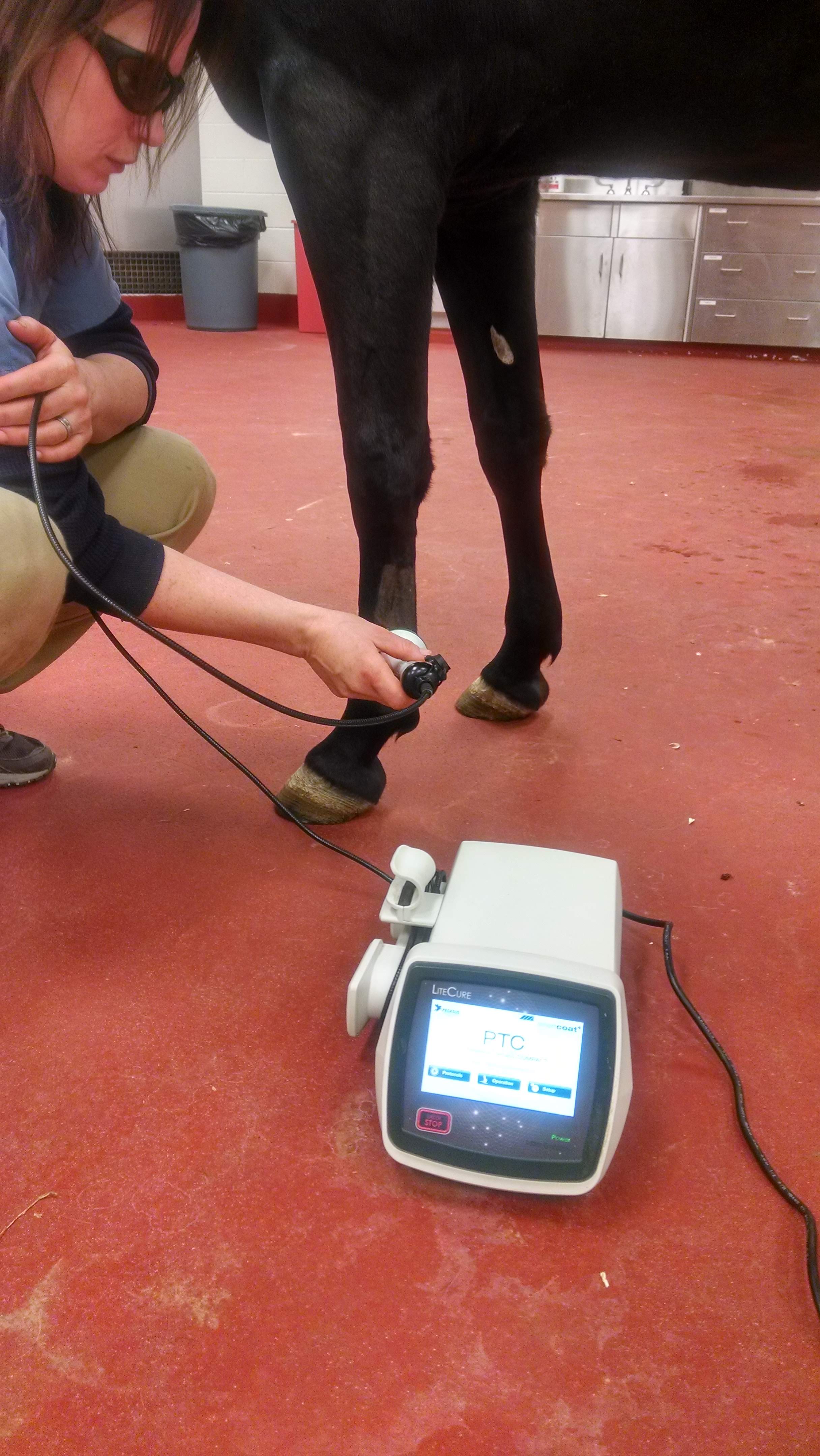Discover the Incredible Advantages of Equine Therapy for Psychological Recovery
Discover the Incredible Advantages of Equine Therapy for Psychological Recovery
Blog Article
Examining the Performance of Laser Therapy in Equine Treatment for Injury Rehab
The evaluation of laser therapy's effectiveness in equine injury rehab pivots on numerous factors, including recovery time, pain mitigation, and tissue regeneration. Veterinarians frequently observe exceptional results with laser therapy compared to traditional techniques, placing it as a vital component in equine treatment. Equine Therapy.

Understanding Laser Treatment
Laser treatment has actually ended up being an essential tool in veterinary medication, specifically in the therapy of equine conditions. Known for its non-invasive nature and efficacy, laser treatment entails the application of details wavelengths of light to boost cells repair work and reduce inflammation. This healing method is significantly preferred for its capacity to speed up the healing procedure in steeds experiencing a selection of bone and joint injuries and persistent problems.
The primary system behind laser therapy is its capability to enhance mobile features. Furthermore, laser therapy advertises vasodilation, improving blood circulation and oxygen delivery to broken tissues, therefore speeding up recuperation.
In equine medication, laser therapy is specifically useful for problems such as tendonitis, osteoarthritis, and injury healing. The strategy is lauded for its pain-relieving residential properties, allowing steeds to gain back mobility and feature extra rapidly. Vets additionally appreciate its very little side effects contrasted to other therapy methods, making it a trustworthy and secure option for equine treatment.
How Laser Treatment Works
To understand how laser therapy works, it is vital to dig right into the communication in between light power and biological cells. Laser treatment, additionally referred to as Low-Level Laser Therapy (LLLT) or photobiomodulation, uses particular wavelengths of light to penetrate cells and boost mobile procedures. The device depends upon the absorption of photons by cell chromophores, mainly within the mitochondria, which are critical for energy manufacturing.
Upon absorption, these photons set off a series of biochemical modifications, improving mitochondrial feature and causing enhanced adenosine triphosphate (ATP) production. This rise in ATP accelerates cellular metabolic process, promoting tissue repair and regrowth. In addition, laser therapy regulates inflammatory feedbacks by influencing cytokine degrees and lowering oxidative stress and anxiety, therefore reducing pain and swelling.
An additional considerable aspect of laser treatment is its function in enhancing microcirculation. The treatment promotes vasodilation, boosting blood flow and oxygen distribution to damaged tissues. This assists in the removal of mobile debris and sustains the expansion of fibroblasts and collagen synthesis, crucial for injury healing.
Scientific Evidence
The efficiency of laser treatment in equine therapy has been validated with different professional studies, showcasing its therapeutic prospective throughout an array of problems. A study conducted by Turner et al. (2012) demonstrated that equines treated with low-level laser treatment (LLLT) for ligament injuries showed increased recovery contrasted to those obtaining conventional treatments.
Likewise, research study by Johnson and coworkers (2015) concentrated on equine muscular tissue injuries, revealing that laser therapy dramatically quickened muscular tissue fiber regeneration and reduced muscle stiffness. These findings were affirmed by histological evaluations revealing better muscle mass cells company. Scientific analyses have actually revealed that laser treatment can relieve chronic problems such as osteo arthritis. A research study by Smith et al. (2018) reported that steeds with osteoarthritic joints experienced remarkable discomfort alleviation and raised range of motion complying with a program of laser therapy sessions.
Veterinarian Insights
Vet professionals have actually progressively identified the value of laser treatment in equine treatment, pointing out both empirical evidence and direct experience. Dr. Jane Smith, a leading equine vet, notes that check that laser treatment has revealed amazing efficiency in decreasing swelling and accelerating cells repair. "In my method, I have actually observed faster recuperation times in horses treated with laser therapy contrasted to traditional techniques," she mentions. This sentiment is echoed by Dr. John Doe, that stresses that laser therapy uses a non-invasive choice with minimal negative effects, making it particularly suited for equine individuals.
Vets also appreciate the convenience of laser treatment. It can be employed for a vast array of problems, from surface wounds to deeper musculoskeletal injuries. Dr. Emily Brown highlights its energy in treating conditions like tendonitis and osteoarthritis, click here to find out more where traditional therapies often fail. She explains that laser treatment can be customized to the specific needs of each steed, ensuring optimal results.

Practical Factors To Consider
An essential element of executing laser therapy in equine therapy includes understanding the sensible considerations that ensure its efficiency and safety and security. Primarily, it is crucial to choose the appropriate laser tool, as various kinds differ in wavelength, power, and infiltration deepness. Veterinarians have to be skilled in these criteria to tailor treatment methods efficiently per my sources injury type
Additionally, the frequency and duration of laser treatment sessions require cautious preparation to make the most of healing advantages while reducing any kind of potential negative results. Consistent tracking of the steed's response to treatment can lead necessary adjustments in the therapy program. Developing a safe and controlled setting throughout treatments is also important to protect against unintentional direct exposure to laser emissions, which could hurt both the steed and the trainer.
Training and accreditation of workers carrying out laser treatment are paramount to make sure correct technique and to support security requirements. Furthermore, keeping exact documents of each session, consisting of laser setups and observed outcomes, is vital for evaluating the general efficiency of the treatment and for making data-driven choices.
Verdict
Laser treatment has actually emerged as a reliable technique in equine injury rehabilitation, supplying considerable benefits in recuperation time, pain alleviation, and tissue recovery. For ideal results, constant monitoring and customized treatment methods stay essential in leveraging the complete potential of laser treatment in equine care.
Report this page